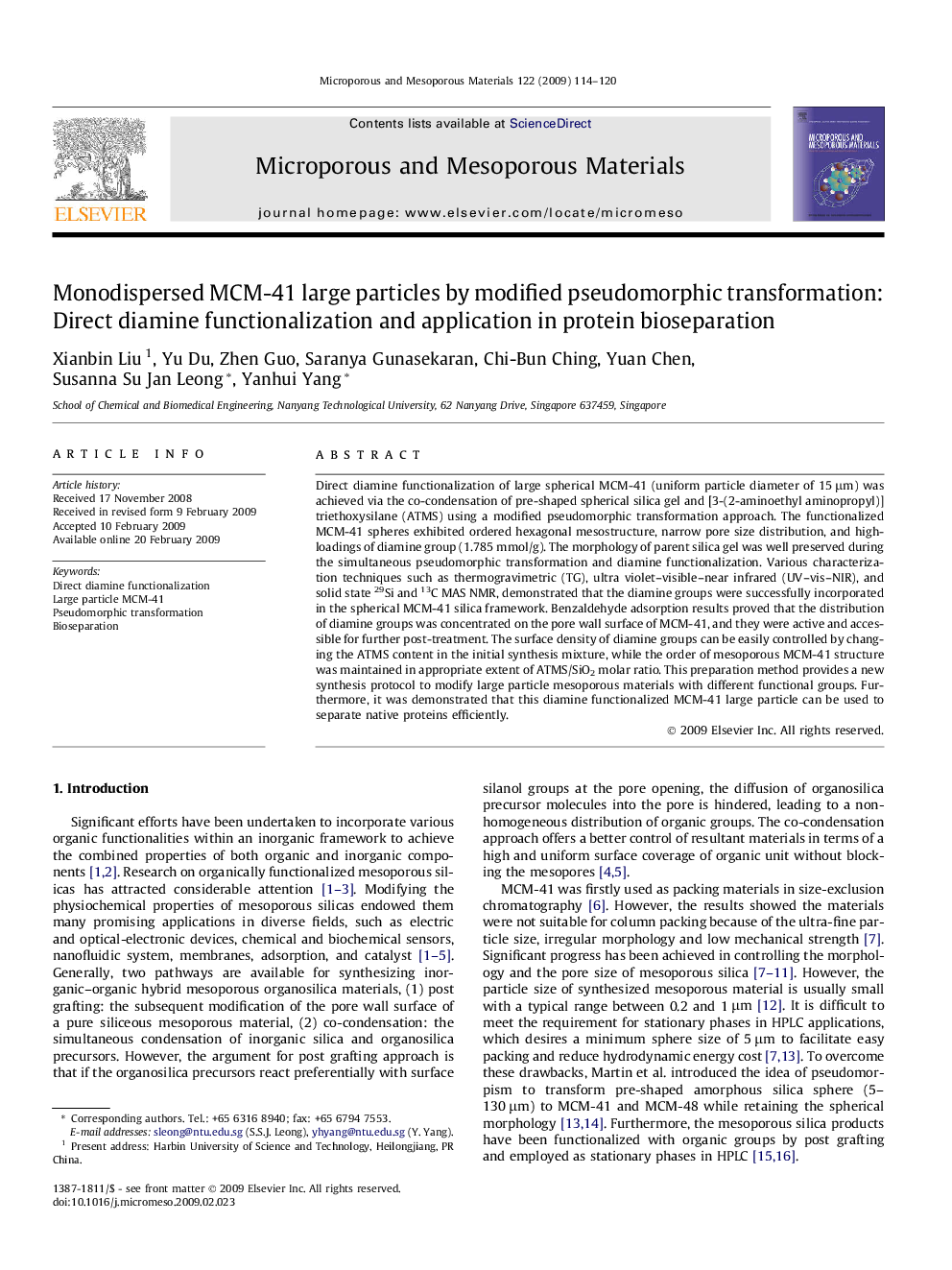| Article ID | Journal | Published Year | Pages | File Type |
|---|---|---|---|---|
| 75936 | Microporous and Mesoporous Materials | 2009 | 7 Pages |
Direct diamine functionalization of large spherical MCM-41 (uniform particle diameter of 15 μm) was achieved via the co-condensation of pre-shaped spherical silica gel and [3-(2-aminoethyl aminopropyl)] triethoxysilane (ATMS) using a modified pseudomorphic transformation approach. The functionalized MCM-41 spheres exhibited ordered hexagonal mesostructure, narrow pore size distribution, and high-loadings of diamine group (1.785 mmol/g). The morphology of parent silica gel was well preserved during the simultaneous pseudomorphic transformation and diamine functionalization. Various characterization techniques such as thermogravimetric (TG), ultra violet–visible–near infrared (UV–vis–NIR), and solid state 29Si and 13C MAS NMR, demonstrated that the diamine groups were successfully incorporated in the spherical MCM-41 silica framework. Benzaldehyde adsorption results proved that the distribution of diamine groups was concentrated on the pore wall surface of MCM-41, and they were active and accessible for further post-treatment. The surface density of diamine groups can be easily controlled by changing the ATMS content in the initial synthesis mixture, while the order of mesoporous MCM-41 structure was maintained in appropriate extent of ATMS/SiO2 molar ratio. This preparation method provides a new synthesis protocol to modify large particle mesoporous materials with different functional groups. Furthermore, it was demonstrated that this diamine functionalized MCM-41 large particle can be used to separate native proteins efficiently.
